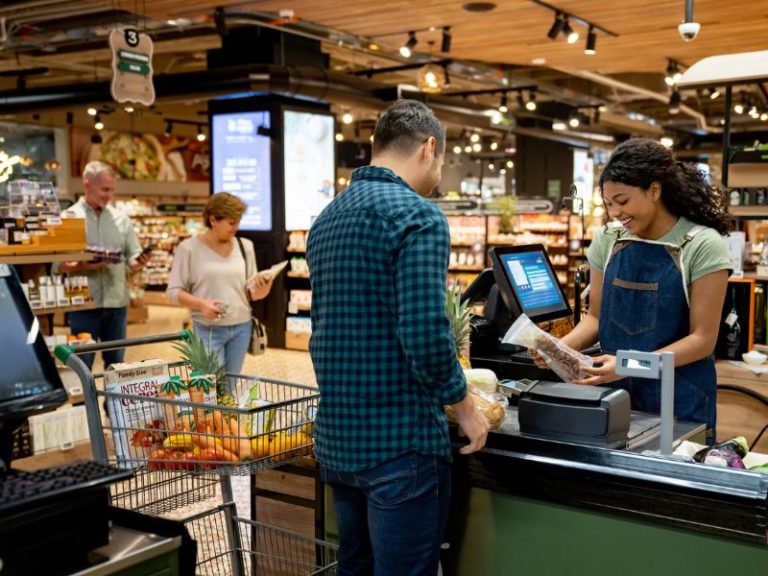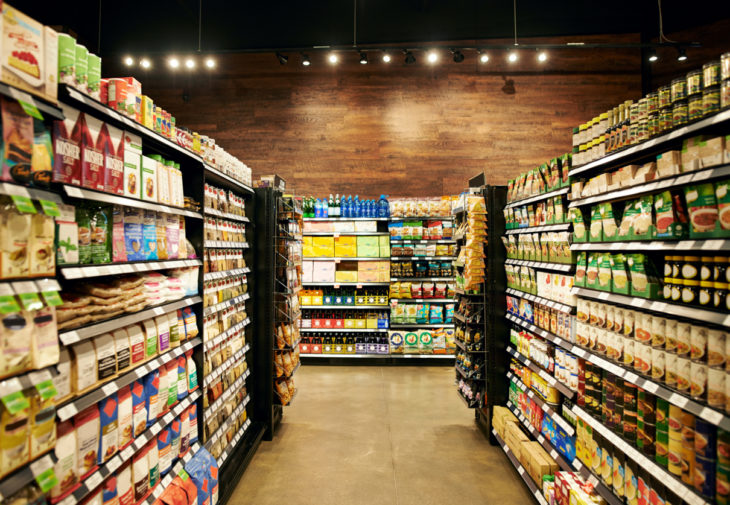Transforming grocery retail: How consumer trends and data analytics are driving global success

The grocery industry is undergoing rapid change, driven by economic pressures and evolving consumer behaviors. To grow in the grocery sector, it is crucial to comprehend these changes to effectively strategize and capitalize on emerging opportunities.
For real estate planners and business development professionals, leveraging comprehensive data and adopting flexible strategies are key to thriving in this environment.
This blog shares key insights from a webinar led by Rich Wilcox, Head of Solution Engineering at Kalibrate, focusing on the current state of the international grocery market and its implications for grocers.
Global trends impacting the grocery industry
The cost of living crisis has made consumers increasingly price-conscious. Groceries, often one of the largest monthly expenditures, are under scrutiny as consumers seek ways to save. Discount retailers like Aldi and Lidl are gaining market share due to their competitive pricing, forcing traditional grocers to adapt by introducing economy labels, price match promises, and even launching their own discount brands — with varying success in different markets.
The COVID-19 pandemic further accelerated diversification in the grocery sector. Online shopping and click-and-collect services become integral during the peak of the pandemic and look like they’re here to stay with many consumers continuing to prefer these options even as life returned to normal. This shift led to a drop in physical store footfall, compelling grocers to enhance their online presence and explore new customer engagement strategies.
Leveraging data to navigate market changes
To address the evolving consumer landscape, grocers must utilize a variety of data sources. Proprietary customer data, demographics, expenditure patterns, and customer segmentation are vital in understanding and predicting consumer behavior. Additionally, competition analysis and up-to-date market intelligence are essential for making informed decisions.
- Customer profiling and segmentation: Understanding the current customer profile and its changes over recent years is the foundation for effective business strategy. Customer segmentation helps identify different consumer groups and their shopping behaviors. For instance, city dwellers with higher incomes may prefer traditional grocers, while younger, budget-conscious families might favor discount retailers.
- Location strategy: Determining the best locations for new stores requires a comprehensive analysis of customer demographics, existing store performance, and competitor presence. Predictive models can project sales for potential sites, helping grocers optimize their physical footprint. Hotspot analyses can identify underserved areas with high potential for new store openings.
- Competition analysis: Assessing the competitive landscape involves understanding the proximity and impact of competitors on store performance. By categorizing competitors into adjacent, impacting, and intercepting groups, grocers can develop targeted strategies to mitigate competitive threats and capitalize on market opportunities.
- Right-sizing and network optimization: Changing consumer behaviors necessitate a reevaluation of existing store networks. Mobility data can reveal overlapping trade areas and opportunities for consolidation without significant sales loss. Simulations can predict the impact of store closures on overall performance, aiding in strategic decisions regarding relocations and divestments.
- Omnichannel strategy: An effective omnichannel approach considers the interplay between online and in-store shopping. Analyzing customer data across different sales channels helps grocers understand the preferences of various customer segments. For example, city advantage groups may prefer online shopping, while aging locals are more inclined to visit physical stores. Understanding these dynamics enables grocers to tailor their offerings and improve customer experience across channels.
Real-world examples: Brussels, Melbourne, and Johannesburg
To illustrate these concepts, let’s examine three markets: Brussels, Melbourne, and Johannesburg. By comparing traditional and discount grocers in these cities, we can observe distinct trends:
- Brussels: A noticeable shift in footfall from traditional to discount grocers, with aspiring families increasingly favoring discount options.
- Melbourne: Similar footfall trends, with traditional retailers struggling to attract younger consumers. Per capita income analysis shows higher earners gravitating towards discount retailers.
- Johannesburg: A unique market with diverse consumer segments, showing that traditional grocers still attract older, more affluent customers, while discount retailers appeal to lower-income groups.
These examples underscore the importance of tailored strategies based on local market dynamics and consumer preferences.
Watch this 30 minute webinar for more in-depth information on the best practices that can be used to address the biggest challenges facing supermarket operators and real estate departments today.
Read more articles about:
Location intelligenceSubscribe and get the latest updates
You may unsubscribe from our mailing list at any time. To understand how and why we process your data, please see our Privacy & Cookies Policy
On demand webinar: the changing grocery consumer profile
Watch our webinar discussing the trends impacting the grocery industry and how to develop actionable insights to optimize your strategy when identifying new site opportunities, and when considering rightsizing, relocating

Related posts
Location intelligence
Top five factors to consider when choosing a location analytics partner
Explore the critical considerations when choosing a location analytics partner to optimize and grow your real estate...

Location intelligence
Grocery sales forecasting: Keeping pace with an evolving industry
As the grocery market continues to change, so does its sales forecasting. From the long used gravity model to current...


